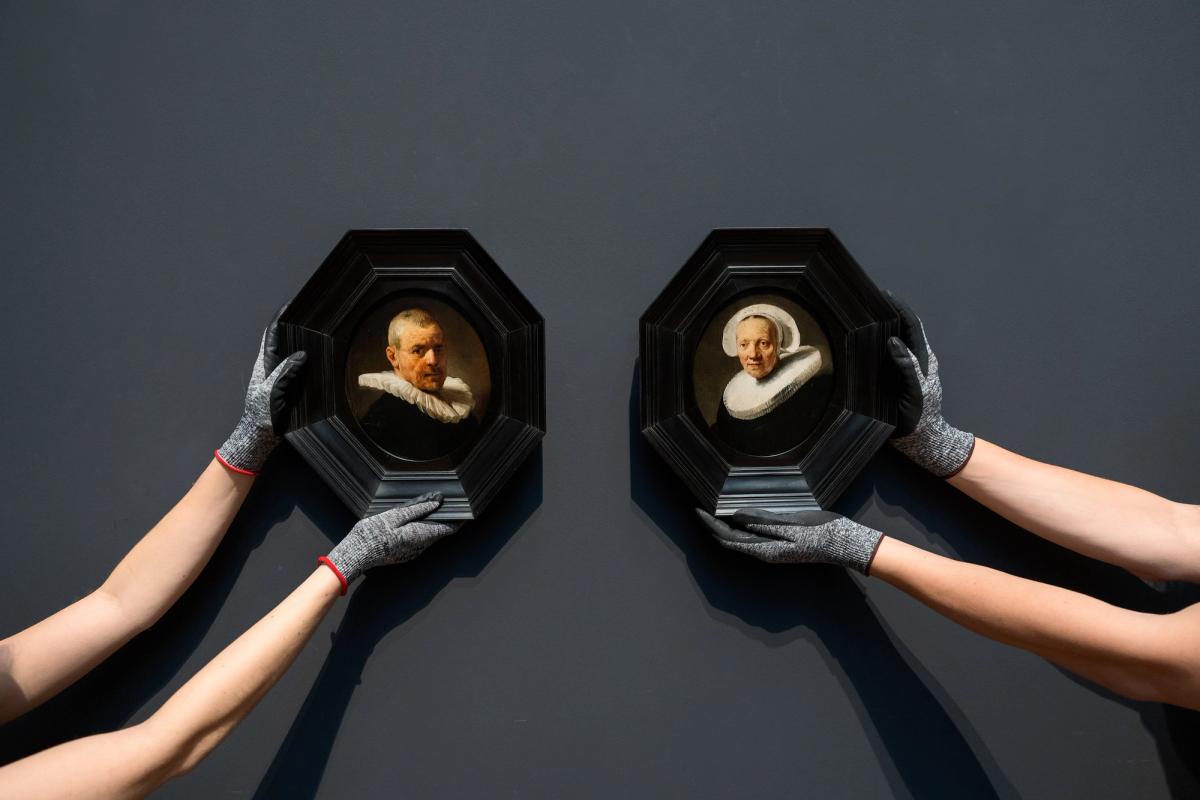The smallest formal portraits made by Rembrandt have been put on show at the Rijksmuseum in Amsterdam after being rediscovered earlier this year.
Small, oval images of “Jan and Jaapgen”—a wealthy slater and plumber from Leiden and his wife—disappeared for almost two centuries into a private family collection. The £11.2 million paintings have, following extensive research, been accepted as part of the Dutch master’s work and have been unveiled on long-term loan at the Rijksmuseum.
“It is mindblowing,” says Jonathan Bikker, the museum’s curator of 17th-century Dutch painting. “Totally unknown works hardly ever happen. We really wanted to be able to show them.”
The 19.9cm-by-16.5cm depictions of 69-year-old Jan Willemsz van der Pluym and 70-year-old Jaapgen Caerlsdr (who were family friends of the artist), were probably painted by Rembrandt in 1635 “as a favour to the couple”, at a time when he was Amsterdam’s most-wanted portraitist. Jaapgen was visiting Amsterdam for a baptism and, Bikker believes, may have asked Rembrandt for the portraits, intending to have larger copies made later.
They are indeed smaller versions of two large works that are not attributed to Rembrandt but were first suspected to be the work of the Dutch master after the Amsterdam city archivist Isabel van Eeghen discovered all four pieces in a 1760 auction catalogue in 1977.
Thanks to “compelling evidence” from X-radiography, infrared photography and reflectography, macro X-ray fluorescence, stereomicroscopy and paint sample analysis, the Rijksmuseum formally established the attribution, and the portraits were auctioned in July by Christie’s in London.
Bikker says the style, paint and alterations matched the works to Rembrandt’s hand. “These paintings, considering their style, are very sketchy and spontaneous and that’s just something a copyist doesn’t do,” he says. “There are pentimenti [traces of earlier painting] and other very small changes; when you make a copy, you try to be exact and precise, but Rembrandt is characteristically making changes during the painting process.”
The Van der Pluym family had a close bond with Rembrandt’s family after their son Dominicus married Rembrandt’s cousin Cornelia Cornelisdr van Suytbroek in 1624. Collector Henry Holterman, whose family bought the portraits earlier this year, has given the portraits on long-term loan in recognition of the Rijksmuseum’s research.
Taco Dibbits, the director of the Rijksmuseum, said: “Jan and Jaapgen will bring visitors closer to Rembrandt’s family circle. It is wonderful that the paintings are being entrusted to the Rijksmuseum so that millions of people can enjoy them.”


